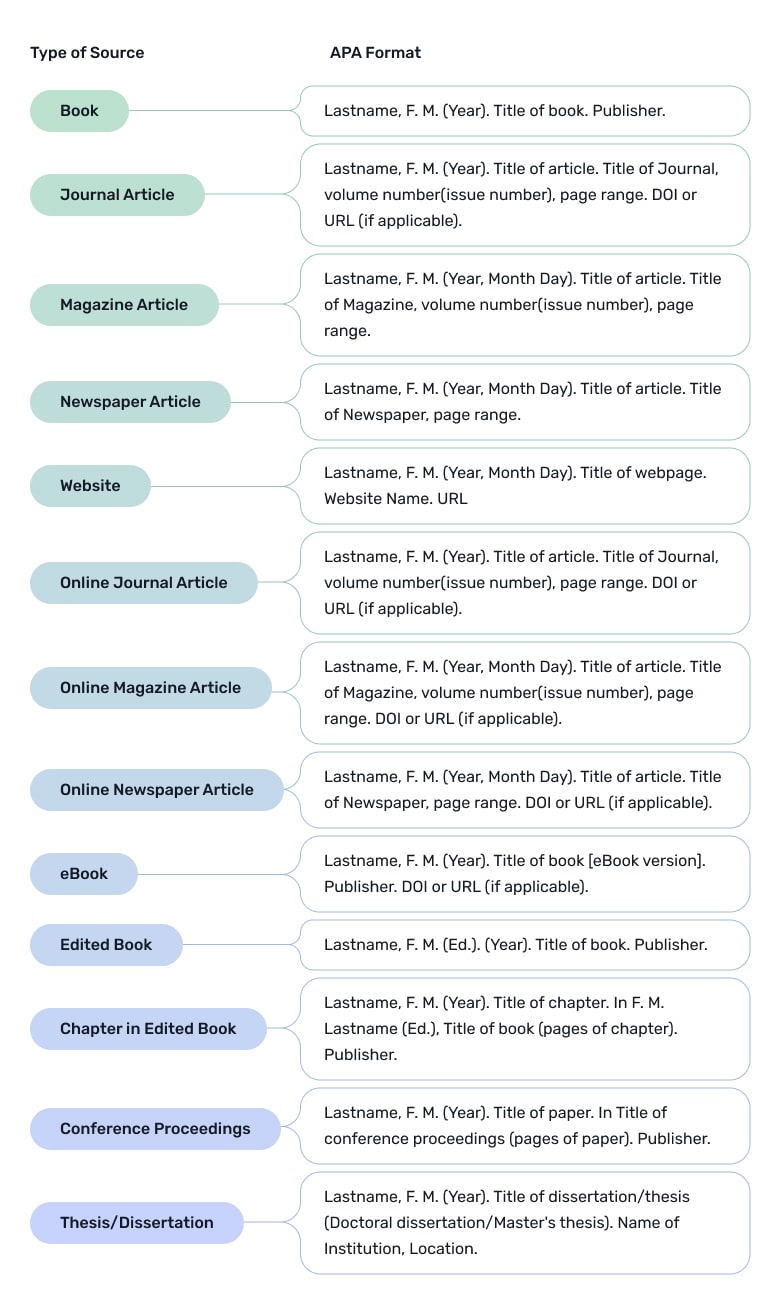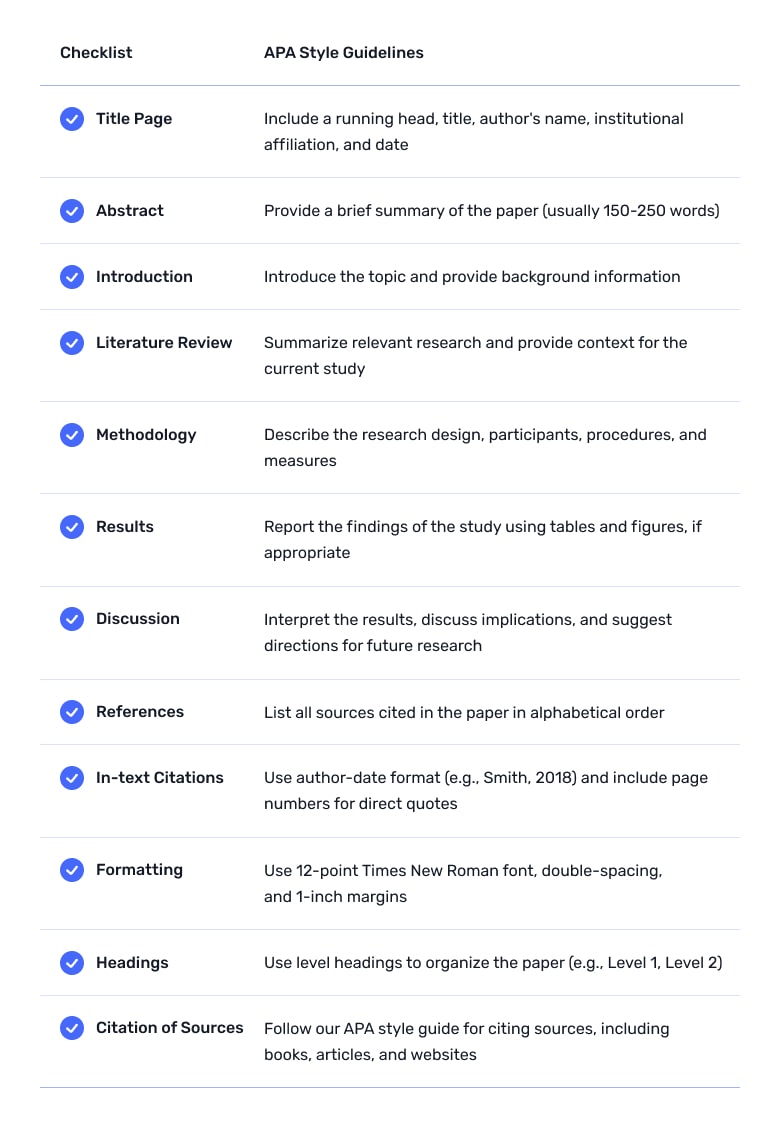APA Style
Let’s talk in more detail about the most famous citation style – APA. The present-day version of APA used in educational institutions worldwide is the 7th edition of the style guide (released in October 2019). The latest update simplified many cumbersome APA styling issues, making it a much user-friendlier referencing approach.
The rule of thumb is to indicate the author and the date of the source’s publication in parentheses. It’s enough for an indirect quote. If you want to take a piece of external source and cite it word for word, you’ll also need to indicate the page number. Here are the examples.
Private schools became an additional source of socio-economic privilege (Johnson, 2009).
Johnson (2009) characterized private schools as new instruments of socio-economic privilege.
Some students may find it hard to use APA because of “numerous complexities and nuances of source citation” (Wade, 2019, p. 27).
Wade (2019) pointed out that it may be hard for students to apply APA because of “numerous complexities and nuances of source citation” (p. 27).
Here’s how you should cite sources with two authors.
Water boils at 100 degrees Celsius (John & Rode, 2020).
The source with three and more authors follows a simplified citation format now:
Waterman et al. (2019) clarified that children with a dysfunctional attachment history are at a higher risk of dropout.
Yet, you need to indicate all authors (up to 30) in full on the reference page.
The sources cited in APA style would look as follows in the References section.
BOOK
James, K. (2019). Citing sources in APA style. Cambridge University Press.
ARTICLE
Karrie, M. (2020). The rules and standards of citing in APA. Linguistics Journal, 29(3), 123-156. https://doi.org/10.2.45.679
WEB RESOURCE
APA style. (2022, Sep. 2). In Wikipedia. https://en.wikipedia.org/wiki/APA_style
How to Cite Sources

Note: This is not an exhaustive list of all the sources you may encounter in academic writing, and there may be variations in formatting depending on the specific requirements of your course or institution. Be sure to consult your instructor or a reliable APA style guide for more detailed information.
Additional Guidelines
How to actually write a paper in APA style?
Writing a paper in APA style can be intimidating, but with a little guidance, it can become much more manageable. Here’s a short guide on how to write a paper in APA style:
1. Format your paper
The first step in writing a paper in APA style is to format your paper according to the guidelines. Use 12-point Times New Roman font, double-spaced, and set your margins to 1 inch on all sides.
2. Write your title page
Your title page should include the title of your paper, your name, and the name of your institution. It should also include a running head with the title of your paper (no more than 50 characters) in all caps.
3. Write an abstract
Your abstract should be a brief summary of your paper, no longer than 250 words. It should include the purpose, methods, results, and conclusions of your research.
4. Write your introduction
Your introduction should introduce your research question or thesis statement, and provide some background information on the topic.
5. Write your literature review
Your literature review should provide an overview of the existing research on your topic. Be sure to cite all sources using APA style.
6. Write your methodology
Your methodology should explain the methods you used to conduct your research, including any participants or materials used.
7. Write your results
Your results should present the findings of your research. Use tables or figures to present your data when possible.
8. Write your discussion
Your discussion should interpret your results and provide some conclusions about your research.
9. Write your references
Your references should be listed alphabetically, and include all sources cited in your paper.
Remember, the APA style is a complex set of guidelines, so it’s always a good idea to consult the official APA manual for more information.

Some Extra Tips
Here are some more intricacies in APA use:
- Don’t capitalize the sources’ titles on the reference page. The only exception is the word following a colon in the title.
- Include DOIs and URLs for the peer-reviewed articles you’ve used.
- Direct quotes containing less than 40 words should be included in the text as narrative quotes. Quotes longer than 40 words should be indented and cited in the text without quotation marks.
APA doesn’t seem to be a hassle. Yet, as with any other referencing style, it has some nuances and peculiarities of use (otherwise, the APA style guide wouldn’t occupy 300+ pages). Thus, you can double-check the correctness of your citations using a free APA citation generator. It will show where you missed the point, allowing you to make corrections before the professor sees your paper.